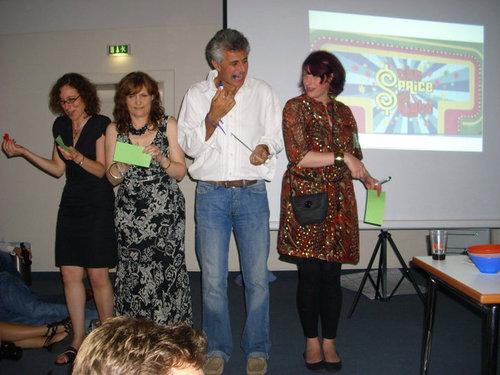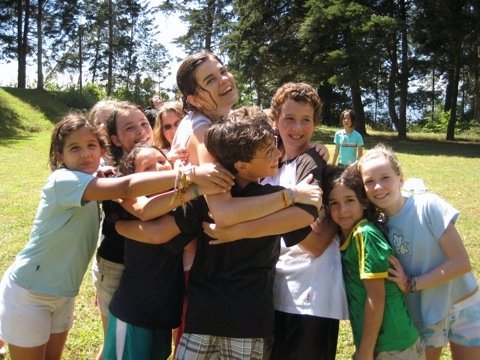On olive seeds, lame shows and bread bets during AIM.If AIMs were purely a business meeting full of work, meetings, voting and elections and took place in the same country, maybe even in the same hotel every year, hardly anybody could be convinced to take part more than once or twice. Luckily we have a rotation scheme (criticized by some people) that brings us to different places around the world, so there are people that have taken part in AIMs 10 times or more, like myself. What also makes AIMs special, is some sort of entertainment that happens without much planning and is the result of common creativity. Here are my favourite ones:
- In Brazil 1999 two committee chairs collected money from everybody, bought liquors and hosted what was probably one of the best inofficial room parties ever held at an AIM. Some people tried to make it a tradition and coined it the "End of the World Party", but as it goes with many things, as soon as it becomes commonplace, it loses its appeal. When talking about room parties at least it should be mentioned that in the USA 2001 one particular room was visited almost every night by many many people to enjoy a nice cup of Caipirinha. The IJBC staff brought AIM's party culture to another level, by hosting an exquisitely curated Party called "greyscale" with pixel art on the walls and super-mario movies running next to the DJ.
- During the AIM in Israel 2004 there was an abundance of Olives, and for whatever reason an olive-seed spitting contest evolved. It all developed into an organized competition including referees who measures the distances and a website that tracked results. Besides long-distance spitting there was also a height and an artistic discipline.
- In Thailand 2005 people suddenly started betting on different things during the day. People had to guess, for example, where the bread basket would be placed during the dinner buffet or how many things Jiro/THA the AIM co-ordinator was going to announce during his daily speeches. If the winner of the bet wasn't obvious, Ryan/CAN who had already starred as a referee for the olive spitting contest set up silly instant competitions (organized in semi-finals and finals) that took place on the terrace by the river. Whoever lost the bet had to make sure some kind of weird word had to be mentioned in the plenary, which ended up in Tita/Brazil (trustee) asking the Seminar Camp chair whether "Robin Hood" could ever become a staff (Answer: "yes, with some training"), and Omar/EGY publicly referring to a conversation on "Pakistan" during the budget discussion.
- One evening during AIM in Sweden 2006 Bebe/SWE was wondering whether there could be any worse Superpower than turning yourself into plancton (irreversibly). We had great laughs and sooner or later almost every AIM participant came up with his or her own
useless superpower (noted on the nametag together with a funny logo). It even turned into a game, where people swapped their superpowers (using "Swapoman"'s power) but had to avoid becoming the obviously undesirable Captain Plancton. It all ended with a public swap in the plenary during the last day, when one of our executive trustees ended up being the superhero who could turn himself into a single-cell organism.

- Finally in 2010, we had the
L'AIM NIGHT SHOW, which was a little more planned, because Karo and I had the idea before the AIM started, but the result was still once again the product of spontaneous, synergiistic creativity at its best. Every night at different venues we ran a mix of different games stolen from public TV shows and invited prominent CISVers as candidates who had to compete in things such as peanut eating or a daily dancing contest between IEC candidates.
Even if all these events were mostly about having fun and nothing really about education in the ASK sense whatsoever, it exemplifies the instantaneous creativity and willingness to make something happen (and not just talk about it) that's exceptional. Similar things happen at camps in various ways, and it may be part of the CISV culture to open up spaces to do things outside the norm that no other place in life (work, school, family) has room for. It's also typical CISVish that such things are acknowledged and very much appreciated. If we manage to continue to make use of this unique talent of many of our members and also channel this power into real and meaningful stuff, I'm sure a great future for CISV lies ahead..


